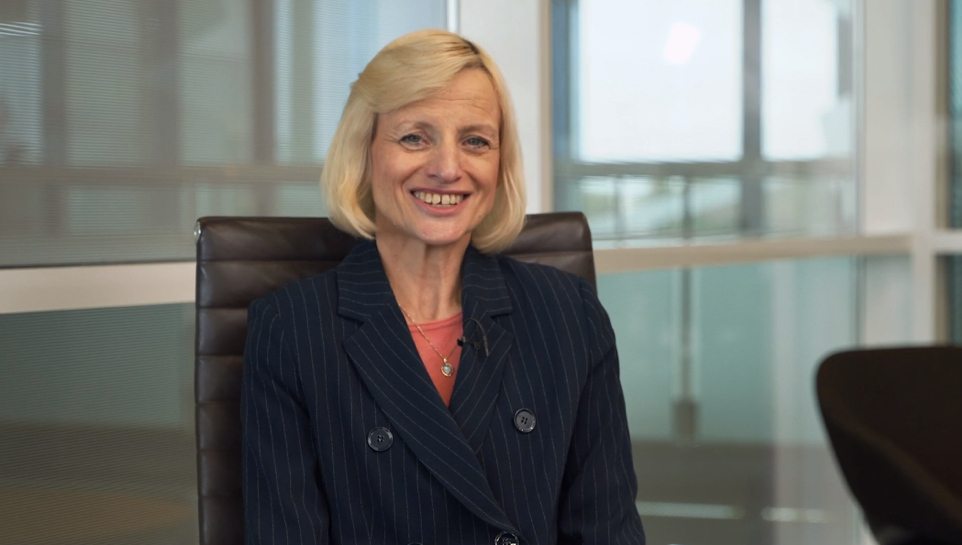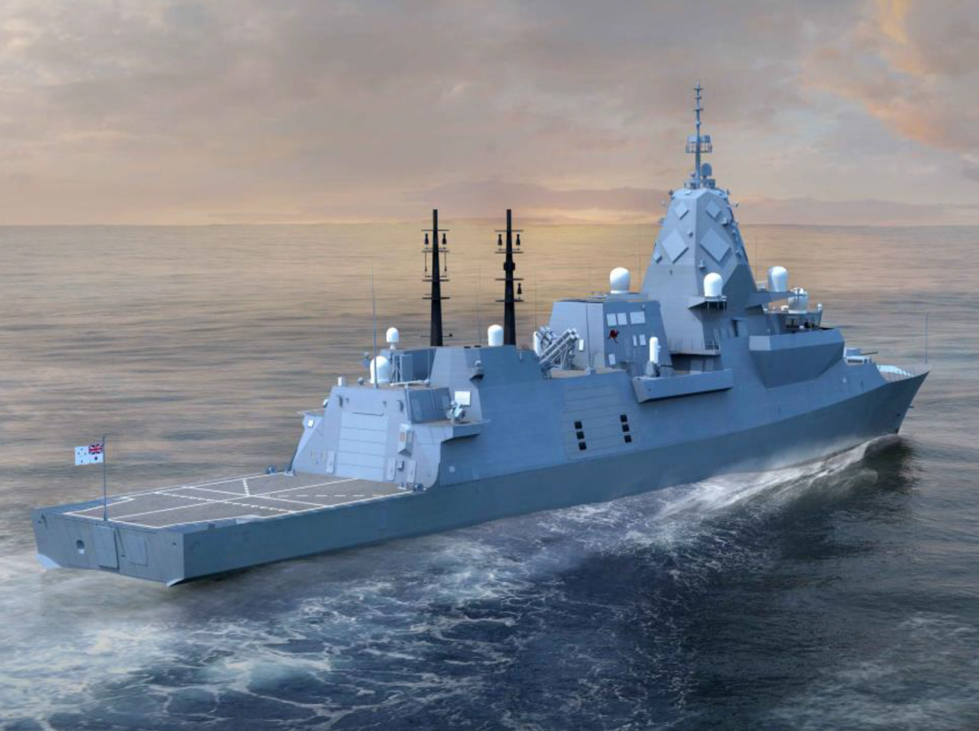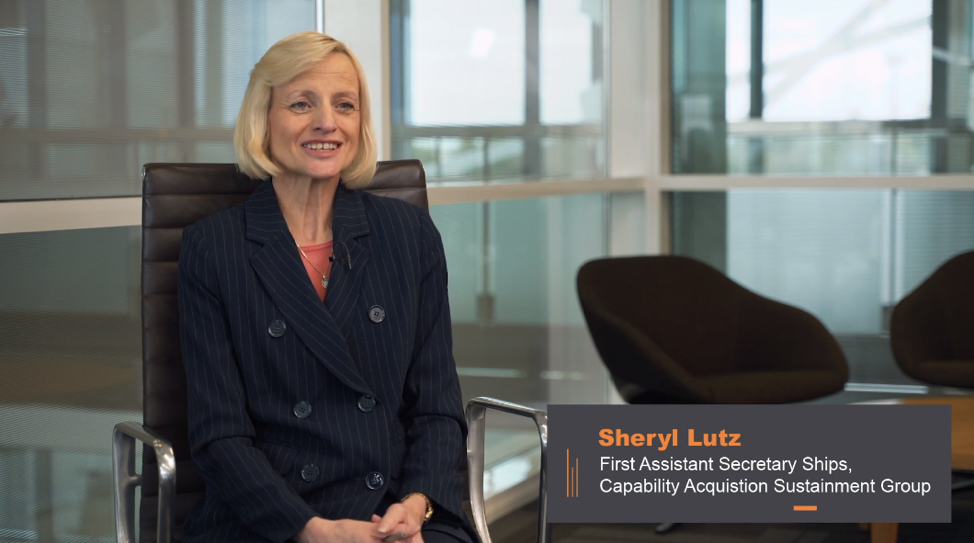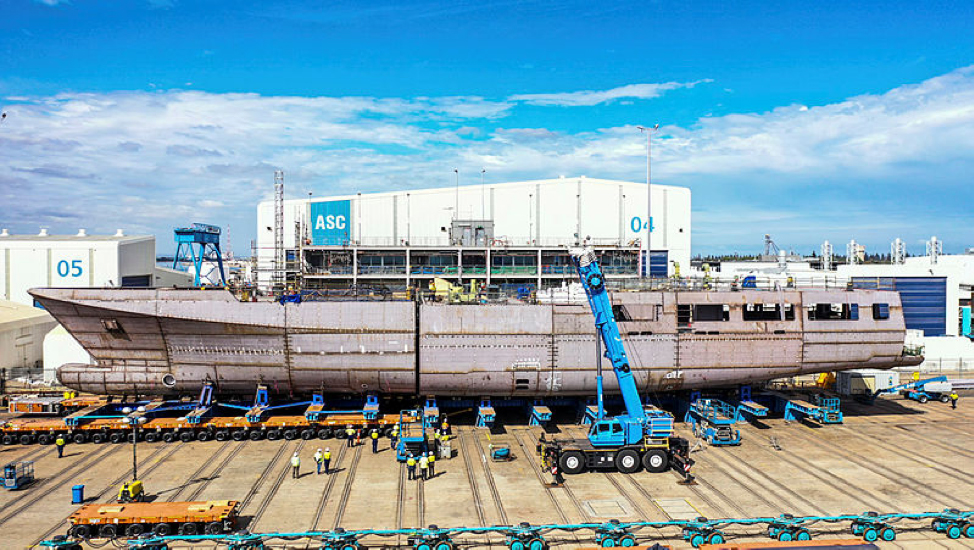- connecting our global business network
30 November 2020
STEM graduate at the helm of Defence’s booming shipbuilding programs

Sheryl Lutz
First Assistant Secretary Ships, Department of Defence
Bachelor of Applied Science in Computer Studies
The sheer physical scale of the projects Bachelor of Applied Science in Computer Studies graduate and First Assistant Secretary Ships at the Australian Government’s Department of Defence, Sheryl Lutz, is currently responsible for is hard to comprehend.
Sheryl oversees the acquisition of the Royal Australian Navy's future fleet of surface combatant and combat support vessels, which is essentially all surface ships the Department of Defence is currently building and planning to build. This involves leading the construction and fit-out of 21 Guardian-class Patrol Boats, 12 Offshore Patrol Vessels, two Auxiliary Oiler Replenishment Ships, manufacturing of various smaller landing craft, and the $45 billion Hunter-class Frigate Project.
The construction of nine Hunter class ships, replacing the current ANZAC class, will mark the biggest surface ship project in the nation’s Defence history and will be built in South Australia’s Osborne Naval Shipyard. Constructed by an Australian workforce using suppliers from across the country, each ship will eventually sit at a length of 150 metres and beam width of 20.8 metres.
This will see Sheryl periodically return to her home state from Canberra to oversee the program that will provide a strong foundation for continuous naval shipbuilding in Australia – creating and sustaining thousands of jobs throughout the Australian defence supply chain, over the life of the program.

But despite her current senior position with the Department of Defence and vast portfolio of responsibilities, a career within the Defence sector was never on the cards for Sheryl while graduating as one of the most promising in her class. However, it is actually where she found her stride and became one of its biggest advocates.
“I was interested in maths and science as a child,” says Sheryl.
“With some encouragement from my father a civil engineer, who was the Head of School for Civil Engineering for several years at the South Australian Institute of Technology, he definitely encouraged me on the mathematical side.”
“I wanted to be a mathematician, but I never thought I'd end up in Defence, I never actually thought of defence as a career.”
Sheryl’s love of mathematics and information technology served her well in her first job as a programmer for BHP Whyalla. Here she spent three years as the only female on the technical side of their process control, before moving to teach at the South Australian Institute of Technology's Whyalla Campus – which later became UniSA.
Then after relocating back to Adelaide and joining the Computer Sciences Corporation (CSC before it became DXC) for her first role in Defence, within two months, she became team leader of their Jindalee Over the Horizon Radar project transmitter team setting her on a trajectory in high-level management roles.
“I think it was probably a natural progression for me – I had an ability to understand and bring people together and get them working together,” says Sheryl. “Maybe that or I was a bad programmer!”
“Some of them are loners – so it is hard to get that kind of team working together cohesively, but you get to know them and you understand what their strengths are, what their weaknesses are, and use that to build a cohesive team.”

“Now being in public service in Government too, my background in industry is a great benefit as it’s unusual – usually its people starting in public service, then going into industry.”
“It gives me a different view of how industry has worked for the commonwealth, and areas I know there's been touch points, so I can make sure we work well together, and I am aware of where we can improve on both sides.”
Throughout Sheryl’s seven years with CSC and two decades with Saab (joining in 1994 while still Celsius Tech) – and positions including Anzac Ship System Design Manager, Celsius Tech Engineering Manager, Capability Development Manager, Anzac Ship Alliance Anti-Ship Missile Defence Project Manager, Anzac Alliance General Manager and Saab Australia General Manger – Maritime – she’s seen not only the vast technology changes in the sector (from a hardware-controlled environment to a more agile and quicker software based system), but the country, and moreover South Australia, turn into a bona fide Defence powerhouse.
This became even more apparent when she joined the Defence Force’s Capability Acquisition and Sustainment Group (CASG) as First Assistant Secretary Ships in 2019.
In Sheryl’s portfolio are the auxiliary replenishment ships – coming in at a whopping 19,500 tonne capacity, 173.9 metre length, and 23 metre height – in which the decision was made for them to be constructed in Spain as they're such large ships and Australia did not have the infrastructure at the time.
However, from now on, in accordance with the Naval Shipbuilding Plan new ships will be built in Australia with the Defence industry ramping up their workforce in preparation for an exciting few decades.
“Australia is already doing a significant amount of shipbuilding and our ships, in terms of quality and what we deliver, are some of the best in the world,” she says.
“But the only way to maintain your workforce is to maintain a constant drumbeat of shipbuilding and that's why we've introduced continuous naval ship building, with two sites in Osborne and Henderson and design hubs across the country.”
“Defence is seen as stable in terms of funding and job security – it will provide jobs for years to come – and if you are designing and building your own ships you've got control.”
“You can work on the ships then your son or daughter can also have a career in the shipbuilding industry.”

While studying Sheryl did not consider a career in Defence, she has well and truly paved the way for women and those from industry in the sector. Though she acknowledges there’s been moments when she had to battle a little harder being female and not served in the Defence Force, barriers have definitely been broken down.
She knows better than most the opportunities in the area for the next couple decades now there’s a need for applicants in many different areas. She remains a strong advocate for the Defence industry and all it has given her.
“I can do what I can in my division. There's a lot of work and several programs in government to encourage females into the shipbuilding industry.”
“We're looking for engineers – mechanical, electronic, combat systems, naval architects, as well as program management professionals, project controls, commercial and all trades. There are vast opportunities – and they're local.”
“Keep studying, work hard, get the good grades, and you'll get the opportunities.”



